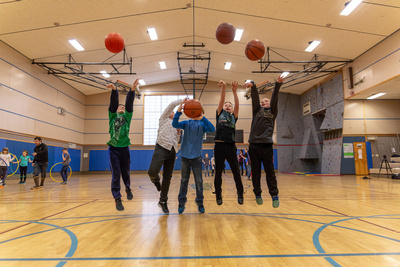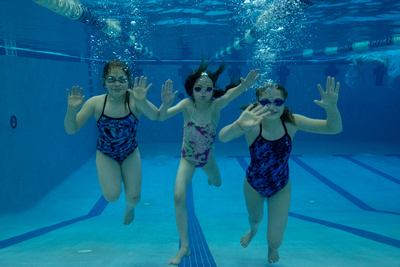Meeting Physical Education Standards
Alaska elementary schools schedule time to help kids stay active
Meeting national standards for physical education in schools
Alaska parents may think their children get a physical education (PE) class as often as they did growing up. In 2017, however, only 1 out of 5 Alaska high school students attended daily gym classes.
Physical education provides a number of benefits to children. It increases their physical activity, can improve their grades and test scores, and builds a foundation for lifelong physical fitness habits.
National standards recommend that elementary schools should provide 150 minutes of physical education each week during the school year. Not all schools in Alaska provide that much. But some Alaska schools that made regular physical education classes a priority have seen benefits.
Providing daily PE classes
Kenai Peninsula Borough School District— The teachers and principal at Seward Elementary School were looking for ways to help students learn and behave better. They found research that showed being active in physical education classes and at recess could help.
The whole school worked together to create a new class schedule. All students grades 3–5 had 30 minutes of gym, five days a week. To do this, staff changed how they served lunch. Students started eating lunch in their classrooms so the gym was open for more PE classes all day.
This helped Seward Elementary meet national standards for physical education during the school week. With morning and lunch recess, many children also got the recommended 60 minutes of play every day.
Seward Elementary teachers like Mark Fraad offered five after-school activities each year: cross country running, soccer, basketball, volleyball, and cross country skiing. Classrooms that made their goal started asking for extra PE time instead of treats, Fraad said. "We're offering a healthy alternative to the pizza party."
Student performance improved, too. After PE classes were added, the percent of students skilled in math and reading increased in grades 3–5. "Physical activity improves academics and behavior," Fraad said.

Providing recommended amounts of PE each week
Petersburg School District— Stedman Elementary School, in Petersburg, stands out in Alaska for the amount of physical education and activity that students get every day.
One way students in grades K-5 at Stedman do this is they alternate their activities over the year, said Ginger Evens, a teacher and District wellness team member. For instance, they take a week of gym class, then a week of swimming lessons.
Students also have 40 minutes of physical education each day Monday - Thursday, and at least 20 minutes of recess each day before lunch. On Fridays, students have 20 minutes of recess. Fridays include special classes where students can be physically active through a number of activities, including playing musical instruments.
Students at Stedman also stay active after school, with: The Girls on the Run program, Viking Swim Club, Mitkof Dance Troupe, Petersburg Parks and Recreation basketball, Petersburg Little League, and other opportunities.
"Petersburg School District students are fortunate that the staff, administration, school board, and community members support the district's physical education programs, along with the physical activity programs," Evens said. "These programs have been sustained even as the budget gets tighter and tighter, as we value the positive outcomes of physical education/activity and academic success."

How to support change
This is what Alaska communities are doing to help kids grow up healthy. What can your community do?
For ideas on how to provide healthy foods, drinks, and physical activity for kids, return to:
Success in Schools